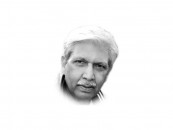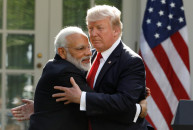What do they know of cricket?
The scene had all the violence of silence

In 2005 at Edgbaston, Brett Lee knelt in the dust, body broken by one of the most bruising Tests of his career. Australia had lost by two runs, the narrowest margin in Ashes history, and the stadium still rang with the aftershock of the final ball. Out of the corner of the frame came Andrew Flintoff, sweat staining his shirt, adrenaline still raging, crouching down to put an arm around Lee's shoulder. The photograph of that moment has long since become myth: two rivals who had spent five days trying to bludgeon each other into submission, bound in a sudden recognition of shared humanity. The Ashes had survived the furnace of Edgbaston, but so too had the spirit of cricket.
Now shift the lens to Dubai, nearly twenty years later, and watch how differently the story was written. India defeated Pakistan by seven wickets. Their captain, Suryakumar Yadav, stroked the winning runs, then walked off the field with his partner. At the rope, Pakistan's players assembled, waiting for the ritual that has outlived empires, wars and partitions: the handshake. They waited. And waited. But the Indian team never came. They congratulated only themselves before vanishing into their dressing room, the door slammed shut behind them, leaving Pakistan's players in the half-light of the ground, their gesture unanswered.
The scene had all the violence of silence. No words were exchanged, no glares thrown. But the deliberate absence said everything. Cricket goes beyond runs scored or wickets taken, its meaning lies in the invisible scaffolding around those numbers; respect, dignity, grace. A handshake is its smallest sacrament, a benediction that closes battle with respect. To withhold it is not just graceless. It is a betrayal of the game's soul.
Yadav would later admit the refusal had been deliberate, sanctioned by the BCCI and "aligned" with the government. The dead of the Pahalgam attack were invoked as justification. The victory, Yadav said, was dedicated to India's armed forces. What honour is there in dragging the memory of terror victims into an act so small, so mean? What dignity in weaponising tribute to cloak a deliberate insult? The dead deserve remembrance, but remembrance should elevate, not corrode. To twist grief into a pretext for gracelessness is to dishonour both memory and sport.
The hypocrisy of the International Cricket Council thickened the shame. This is the same ICC that banned Moeen Ali from wearing a "Free Palestine" wristband, that told Usman Khawaja he could not inscribe "All lives are equal" on his shoes. Political neutrality, they thundered, was sacrosanct. Yet when India's captain dedicated victory to a military operation, when an entire team abandoned sportsmanship in obeisance to government messaging, the ICC fell mute. The reason was no mystery: the ICC is chaired by Jay Shah, son of India's Home Minister, Amit Shah, one of the chief architects of India's fascist politics. In silence lay complicity. For some, the rules are shackles. For others, they dissolve.
To pretend this was only about cricket is to miss the point. It was about the climate of Narendra Modi's India, where pettiness has become statecraft. Every field, education, cinema, sport, has been conscripted into the theatre of performative nationalism. The BCCI, already the wealthiest cricket board in the world, has become a cultural arm of the ruling party. Cricketers are no longer just athletes; they are soldiers in a culture war.
Bollywood plays its part in this machine. Films glorify militarism, frame Pakistan as an eternal adversary, and mint not only rupees but political capital. Cricket, Bollywood, and the media, three industries once capable of nuance, now function as a propaganda triad, each amplifying the other.
The Indian media has abandoned even the fig leaf of balance. Anchors froth with jingoism, screaming of "revenge" and "payback". Matches are cast as battles, opponents as enemies. When Indian players refuse handshakes, television panels laud it as patriotic theatre. Sportsmanship is weakness, grace is treachery, and the smallest snub is repackaged as courage.
But the cost of this theatre is real. For decades, cricket has been one of the few bridges across South Asia's hostile borders, a space where adversaries could fight and then acknowledge each other with dignity. When that bridge is burned, what remains? Only propaganda. Only theatre. Only emptiness.
CLR James, in Beyond a Boundary, posed the immortal question: "What do they know of cricket, who only cricket know?" He meant that cricket cannot be divorced from the world, from history, empire, class and politics. But he also suggested the converse: that to truly know cricket, one must know its spirit. Without that spirit, the game collapses into a husk, a spectacle of bat and ball emptied of grace. The sight of India walking past Pakistan without acknowledgement was precisely that collapse made visible.
The laws of cricket written by the Marylebone Cricket Club (MCC) begin with a preamble: "Cricket owes much of its appeal and enjoyment to the fact that it should be played not only according to the Laws, but also within the Spirit of Cricket." Runs and wickets are the plot. The spirit is the meaning.
And that spirit is fragile. It is not codified in statute but lived in gestures: consoling opponents after a loss, a batsman walking when he knows he is out, congratulating the opposition. These gestures are the moral architecture of the game. Courtney Walsh embodied it in 1987, refusing to "mankad" Saleem Jaffar though it cost his team a semi-final berth. Adam Gilchrist embodied it in 2003, walking in a World Cup semi-final despite the umpire ruling him not out.
Those who bend cricket into the service of Hindutva grievance know nothing of the game at all – not its spirit, not its history, not the fragile grace that lends it meaning. They know only how to turn sport into propaganda, and respect into contempt. In their hands, cricket shrinks to the size of their politics: petty, joyless and hollow.















COMMENTS (5)
Comments are moderated and generally will be posted if they are on-topic and not abusive.
For more information, please see our Comments FAQ